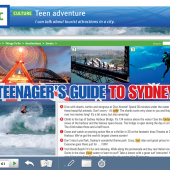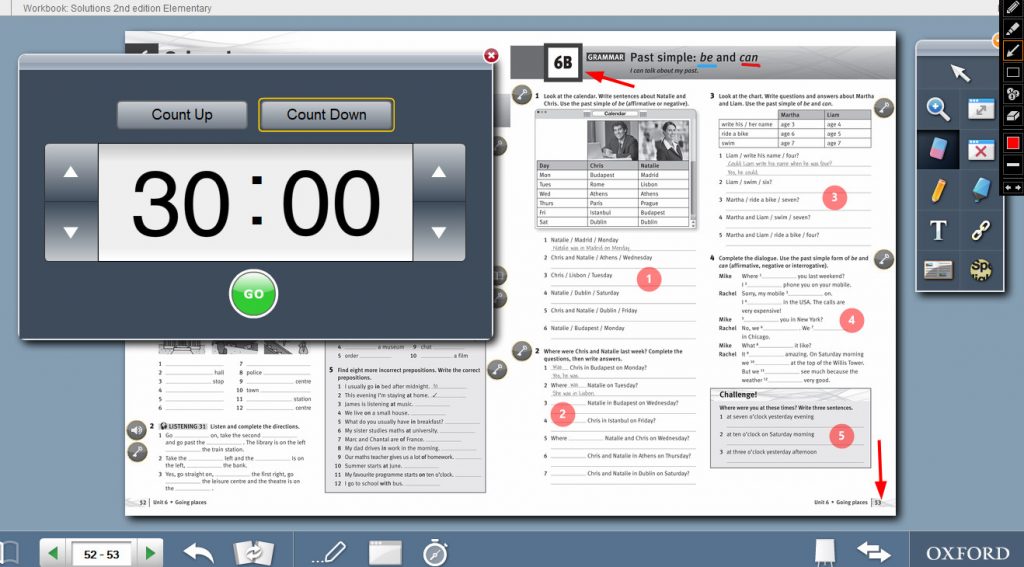Project – CREATING A ROBOT

TASK
Collaborate:
- decide on a type of robot to present.
- decide on the purpose of your robot. consider what you have learned from the TED talks, and consider including the following information:
- Questions your presentation should answer:
- Why is your robot needed? How will it help people?
- What will it be able to do? How will it work?
- Who will use it when and where will they use it?
- Include visuals
- Be prepared to sell your robot, and convince investors to invest in your project.
- assign a part of your presentation,, to each member of your group
- NOTE use a minimum of 10 active words from p.61 (sheets) e.g. access, activate, process, structural, underestimate, imagery, infrastructure, resilient, etc.
window.option_df_13699 = {"outline":[],"autoEnableOutline":"false","autoEnableThumbnail":"false","overwritePDFOutline":"false","direction":"1","pageSize":"1","pageMode":"1","singlePageMode":"1","controlsPosition":"bottom","autoPlay":"true","autoPlayStart":"true","source":"https:\/\/thevoice.space\/wp-content\/uploads\/2023\/11\/The-SwallowGyteVit2A.pdf","wpOptions":"true"}; if(window.DFLIP && window.DFLIP.parseBooks){window.DFLIP.parseBooks();}
window.option_df_13713 = {"outline":[],"autoEnableOutline":"false","autoEnableThumbnail":"false","overwritePDFOutline":"false","direction":"1","pageSize":"1","pageMode":"1","singlePageMode":"1","autoPlay":"true","source":"https:\/\/thevoice.space\/wp-content\/uploads\/2023\/11\/MCC-robot.pdf","wpOptions":"true"}; if(window.DFLIP && window.DFLIP.parseBooks){window.DFLIP.parseBooks();}
window.option_df_13683 = {"outline":[],"autoEnableOutline":"false","autoEnableThumbnail":"false","overwritePDFOutline":"false","direction":"1","pageSize":"1","pageMode":"1","singlePageMode":"1","controlsPosition":"bottom","autoPlay":"true","source":"https:\/\/thevoice.space\/wp-content\/uploads\/2023\/11\/Assitive-robots-for-the-blind-and-deaf.pdf","wpOptions":"true"}; if(window.DFLIP && window.DFLIP.parseBooks){window.DFLIP.parseBooks();}
window.option_df_13706 = {"outline":[],"autoEnableOutline":"false","autoEnableThumbnail":"false","overwritePDFOutline":"false","direction":"1","pageSize":"1","pageMode":"1","singlePageMode":"1","controlsPosition":"bottom","autoPlay":"true","source":"https:\/\/thevoice.space\/wp-content\/uploads\/2023\/11\/Solis.pdf","wpOptions":"true"}; if(window.DFLIP && window.DFLIP.parseBooks){window.DFLIP.parseBooks();}
window.option_df_13702 = {"outline":[],"autoEnableOutline":"false","autoEnableThumbnail":"false","overwritePDFOutline":"false","direction":"1","pageSize":"1","pageMode":"1","singlePageMode":"1","controlsPosition":"bottom","source":"https:\/\/thevoice.space\/wp-content\/uploads\/2023\/11\/whale-robot.pdf","wpOptions":"true"}; if(window.DFLIP && window.DFLIP.parseBooks){window.DFLIP.parseBooks();}
window.option_df_13688 = {"outline":[],"autoEnableOutline":"false","autoEnableThumbnail":"false","overwritePDFOutline":"false","direction":"1","pageSize":"1","pageMode":"1","singlePageMode":"1","controlsPosition":"bottom","autoPlay":"true","source":"https:\/\/thevoice.space\/wp-content\/uploads\/2023\/11\/Creating-a-robot.pdf","wpOptions":"true"}; if(window.DFLIP && window.DFLIP.parseBooks){window.DFLIP.parseBooks();}
window.option_df_13710 = {"outline":[],"autoEnableOutline":"false","autoEnableThumbnail":"false","overwritePDFOutline":"false","direction":"1","pageSize":"1","pageMode":"1","singlePageMode":"1","controlsPosition":"bottom","autoPlay":"true","source":"https:\/\/thevoice.space\/wp-content\/uploads\/2023\/11\/suck-and-stack.pdf","wpOptions":"true"}; if(window.DFLIP && window.DFLIP.parseBooks){window.DFLIP.parseBooks();}
window.option_df_13733 = {"outline":[],"autoEnableOutline":"false","autoEnableThumbnail":"false","overwritePDFOutline":"false","direction":"1","pageSize":"1","pageMode":"1","singlePageMode":"1","controlsPosition":"bottom","autoPlay":"true","source":"https:\/\/thevoice.space\/wp-content\/uploads\/2023\/11\/SAM.pdf","wpOptions":"true"}; if(window.DFLIP && window.DFLIP.parseBooks){window.DFLIP.parseBooks();}
window.option_df_13716 = {"outline":[],"autoEnableOutline":"false","autoEnableThumbnail":"false","overwritePDFOutline":"false","direction":"1","pageSize":"1","pageMode":"1","singlePageMode":"1","controlsPosition":"bottom","autoPlay":"true","source":"https:\/\/thevoice.space\/wp-content\/uploads\/2023\/11\/anglu-prexentacija-lol.pdf","wpOptions":"true"}; if(window.DFLIP && window.DFLIP.parseBooks){window.DFLIP.parseBooks();}
window.option_df_13736 = {"outline":[],"autoEnableOutline":"false","autoEnableThumbnail":"false","overwritePDFOutline":"false","direction":"1","pageSize":"1","pageMode":"1","singlePageMode":"1","controlsPosition":"bottom","autoPlay":"true","source":"https:\/\/thevoice.space\/wp-content\/uploads\/2023\/11\/Robot_-_Simonas_and_Matas.pdf","wpOptions":"true"}; if(window.DFLIP && window.DFLIP.parseBooks){window.DFLIP.parseBooks();}














































